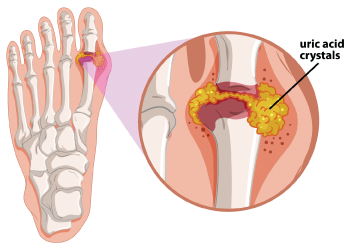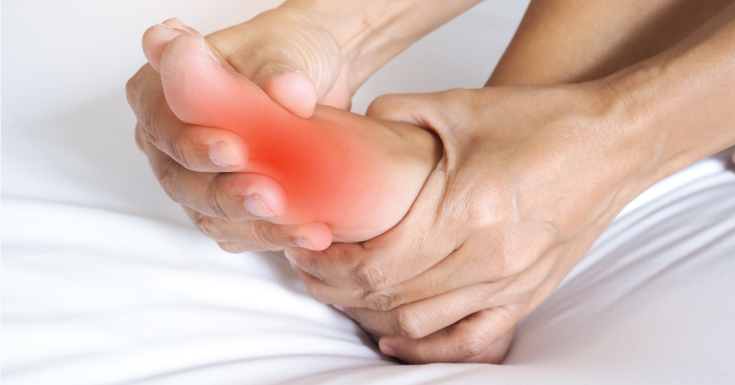Ever experienced flare-up symptoms that cause pain and swelling in your joints, especially around your big toes. These sessional attacks could be caused when your body has extra uric acid thus causing sharp crystals around the joint area.
This is a common condition that is known as Gout, a form of inflammatory arthritis that causes pain and swelling around certain areas including your big toe joint. Other areas can include the knees, ankles, feet, hand and wrists as well as the elbows.
Gout often comes as recurring episodes that will attack the joint areas in the form of flare ups. During these episodes, the affected joints may suffer from intense pain, stiffness, swelling discoloration and at times, the affected individuals may also feel like their joints are on ‘fire’.

So what causes this inflammatory condition?
A build of up excess uric acid in the body tends to trigger the condition and when the body makes too much uric acid or in some instances, when your kidneys do not remove it from your blood fast enough, this causes a build up of uric acid crystals which then settles into the joints.
The formed crystals then clump together and cause sudden episodes of pain, swelling and other symptoms. Episodic flare-ups tend to usually last a week or two. In some cases, it may last longer and with even more severe symptoms.
In addition to this, certain health conditions can also trigger the development of gout, which may include being overweight, congestive heart failure, diabetes, hypertension, kidney disease, and blood cancer.
It is also important to note that some foods are high in purines and unregulated consumption can cause gout. These include
- Sugary drinks and sweets
- High fructose corn syrup
- Alcohol
- Organ meats
- Specialty meats such as goose, veal and venison
- Certain seafood such as herring, scallops, mussels, codfish, tuna, trout and haddock
You’ll want to go for low-purine options like:
- Low-fat and non-dairy – fat products, such as yogurt and skim milk
- Fresh fruits and vegetables
- Nuts, peanut butter, and grains
- Fat and oil
- Potatoes, rice, bread, and pasta
- Eggs (in moderation)
Treating Gout
Identifying and treating Gout may require a few imaging tests to take pictures of the affected joints. Doctors may opt for either X-rays, ultrasound, MRI, or a CT scan. In some instances, some healthcare providers may instead include blood tests and a joint aspiration test which uses a needle to remove a sample of fluid from inside a joint.
Upon identification, the right medication will be prescribed to the patients to control their pain and manage symptoms. It is important to note that there is no cure for gout. However, with the right treatment and medications, individuals with gout can manage their symptoms and lower their uric acid levels.
 Dr Lim Sze Wei
Dr Lim Sze Wei
ALTY Orthopaedic Hospital
Consultant Orthopaedic and Spine Surgeon


